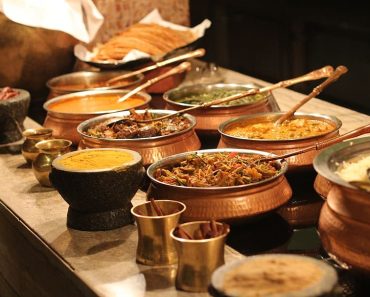The variety of spices used in Indian cuisine, both whole and ground, which are frequently combined to form more complex spice mixtures, is one of the things that scares people away from cooking it. When individuals realize and comprehend the herbs we utilize, I find that they quickly discover that this food isn’t nearly as difficult to make as they had imagined.
These are the eleven spices with which I most frequently prepare Indian food:
1. Cardamom
In Indian cuisine, there are two varieties of cardamom: green and black. Green cardamom is the more prevalent type and may be used in a variety of dishes, from spice mixes to lassis to Indian desserts. The flavour is light and sweet with a mild eucalyptus aftertaste. When making spice mixes, such as garam masala, green cardamom can be blended whole; however, when using them in sweets or desserts, you should pop the pod open and lightly crush the fragrant black seeds before utilizing them.

2. Clove
Clove is a common spice in Indian cuisine and its anise undertones are readily recognized in many Indian dishes. The potent, almost medicinal flavour of clove comes from the concentration of essential oils. Cloves are actually flowers, and a significant amount of their oils are extracted before they’re dried and utilized in cooking. Cloves can be used whole or blended into spice mixtures intact. They should, however, be handled with caution since they may overpower more delicate spices.
3. Cassia bark
Cassia bark, sometimes known as Chinese cinnamon, is a spice from the cinnamon tree. It is a species of cinnamon tree in the genus Cinnamomum. Cinnamon and cassia are two different things that are usually differentiated by being called “true cinnamon.” Cassia bark is less expensive to produce and contains more moisture than true cinnamon. In Indian cooking, cassia bud rather than genuine cinnamon because it has a milder flavour and can be used in greater amounts.
4. Black pepper
India is one of the world’s major producers of black pepper, which is native to the country. Black pepper grows in rich soils in the Western Ghats and Malabar regions. It is a difficult spice to cultivate because it depends on many natural cycles, including a predetermined quantity of rainfall, which is why fresh pepper costs vary considerably.
5. Cumin
Cumin is popular in India for adding a smoky taste to meals. It has ridged brown seeds with a distinct fragrance and distinctive ridged brown seeds. It’s sometimes mistaken for fennel, caraway, or anise seeds, but the difference can be seen by looking at the colour (brown, as opposed to green) and flavour.
6. Coriander
Coriander is a popular spice in India. It’s one of the world’s oldest spices, with a golden-yellow hue and smooth texture. The seeds are aromatic and have citrus undertones.
7. Nutmeg and mace
In Indian cuisine, two of my favourite spices, nutmeg and mace, are often employed. The darker-red outer covering of the nutmeg is known as mace. Fresh nutmeg is grated after removing the pulpy outside and sliding off the mace. It has a tough exterior that must be cracked before grating it.

8. Mustard seeds
Mustard seeds come in yellow, black, or brown hues and may be used interchangeably in Indian cuisine. When mustard seeds are crushed or cooked in oil, their pungent flavour emerges. Mustard oil is commonly utilized in the North of India.
9. Fenugreek
Fenugreek, also known as Kasuri methi in India, is a spice that gives Madras curry powder its unique earthy musky “curry” taste and scent. The seeds are yellowish and resemble tiny wheat kernels. Leaves from the fenugreek plant are dried and used as a spice (they are commonly known as Kasuri methi), giving butter chicken its distinctive flavour.
10. Turmeric
Turmeric is a popular Indian spice. It can be used fresh (like ginger) or dried and grows as a rhizome. It has been proved to have a variety of health advantages, including treating skin problems and inflammation. Fresh turmeric leaves have a stronger flavour than dry ones, so be careful about your clothing and utensils when using them.
11. Saffron
Saffron is the most expensive spice in the world, and it’s more valuable by weight than gold. Due to its labour-intensive production, saffron is one of the most costly spices in terms of weight. Saffron comes from crocus flowers’ stigma and must be collected manually.
